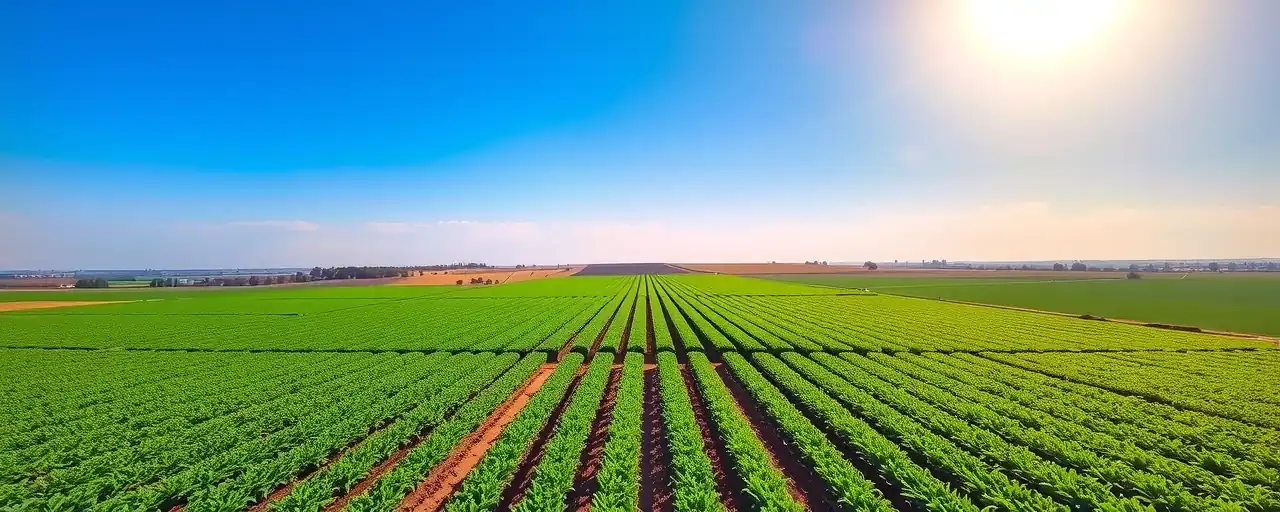A Bold Step for America’s Heartland and Hungry
The U.S. Department of Agriculture has launched a $67 million initiative to buy fresh seafood, fruits, and vegetables directly from American farmers. This plan delivers a lifeline to rural producers and fills food bank shelves with healthy, homegrown food. It tackles two urgent issues: supporting struggling agricultural communities and addressing the hunger that affects millions. Why is this significant? It shows government can act decisively, connecting farmers’ harvests to families’ tables without wasteful bureaucracy.
Led by Secretary Brooke Rollins, the USDA is tapping Section 32 of the 1935 Agriculture Act to purchase Atlantic groundfish, canned pears, dried sweet cherries, Great Northern beans, and Pacific pink shrimp. These choices reflect careful market analysis and food bank needs, ensuring surplus crops feed people instead of rotting in storage. In 2023, 18 million households—13.5 percent of the U.S.—faced food insecurity. This program confronts that reality head-on, delivering nutrition where it’s needed most.
This effort builds on a strong track record. The USDA has already invested over $600 million this fiscal year in similar purchases, all channeled through the nation’s charitable feeding network. The approach reflects the Trump administration’s commitment to making America healthier by prioritizing fresh, American-grown commodities. It’s practical, efficient, and rooted in the belief that smart policy can strengthen both farms and communities.
How This Strategy Delivers Results
Section 32’s strength lies in its ability to adapt. By allocating 30 percent of customs receipts—roughly $1.6 billion in 2024—the USDA buys surplus commodities, stabilizes prices, and supplies programs like The Emergency Food Assistance Program (TEFAP) and the National School Lunch Program. In 2023, the Agricultural Marketing Service spent nearly $900 million on meats, dairy, fruits, vegetables, and fish. These purchases sustain farmers by guaranteeing demand and ensure low-income families access nutritious food.
Consider the $20 million for Atlantic groundfish or $16 million for Pacific pink shrimp. These investments bolster coastal economies battered by regulations and global competition. By prioritizing domestic producers, the USDA keeps money circulating in American communities. The Local Food Purchase Assistance program, which has directed $691 million to 6,000 small farmers since 2021, has sparked up to $1.5 billion in local economic growth. This is policy that drives prosperity, not dependency.
Some argue for expanding SNAP benefits or loosening work requirements, citing the 2021 Thrifty Food Plan update that reduced poverty. Yet, Feeding America’s 2023 data shows a $32 billion food budget shortfall, with families needing an extra $22.37 weekly per person. Bigger benefits haven’t solved hunger—they’ve stretched budgets thinner. The USDA’s market-driven approach, paired with policies encouraging self-reliance, offers a smarter path. The Congressional Budget Office notes stricter SNAP rules could lower participation by three million, nudging people toward independence.
Local Solutions Over Federal Overreach
Certain policymakers advocate for centralized nutrition programs, claiming they’re the best way to end hunger. They praise the 2021 Thrifty Food Plan for boosting SNAP benefits. But hunger persists—47 million Americans lived in food-insecure households in 2023. Top-down plans often miss local nuances and burden taxpayers. The USDA’s strategy, by contrast, empowers the nation’s 200 Feeding America food banks and 60,000 partner pantries, which served 50 million people last year, including 14 million children.
These food banks, like the Los Angeles Regional Food Bank distributing 4 million pounds of food weekly, understand their communities’ needs. By supplying them with USDA Foods through TEFAP, the government amplifies grassroots efforts. This decentralized model respects the dignity of those receiving help and leverages the creativity of local organizations. History supports this: in the 1980s, food banks grew rapidly to meet needs unmet by federal programs, proving charity and community can outperform bloated entitlements.
Why rely on ever-expanding federal programs when we can strengthen farmers, feed families, and uplift communities simultaneously? The USDA’s approach uses market tools to deliver results, echoing the Reagan-era belief that local action trumps Washington mandates. It’s a proven strategy that deserves expansion, not criticism.
Building a Thriving, Self-Reliant America
This $67 million purchase sends a clear message: American farmers are vital, families deserve healthy food, and communities thrive when government supports, not controls, solutions. By investing in domestic producers, the USDA stabilizes markets and protects rural economies from surplus and foreign competition. By focusing on fresh commodities, it tackles the 20 percent child food insecurity rate in rural counties, ensuring kids grow up strong and healthy.
The way forward demands policies that link aid to work, markets to opportunity, and charity to community. The Trump administration’s emphasis on health and self-reliance sets the tone. Food banks should grow as hubs for job training and health services, while the USDA continues using Section 32 to target high-value crops and local producers. This isn’t about handouts—it’s about building a nation where hard work and ingenuity prevail.
What can we do next? Expand these purchases, streamline regulations, and empower local charities to lead. The USDA’s plan is a blueprint for a stronger America—one where farmers prosper, families eat well, and communities solve problems together. Let’s keep pushing for policies that reward effort and deliver results, one harvest, one pantry, one family at a time.
